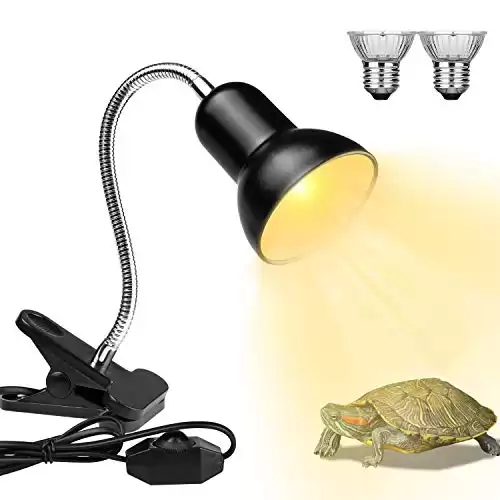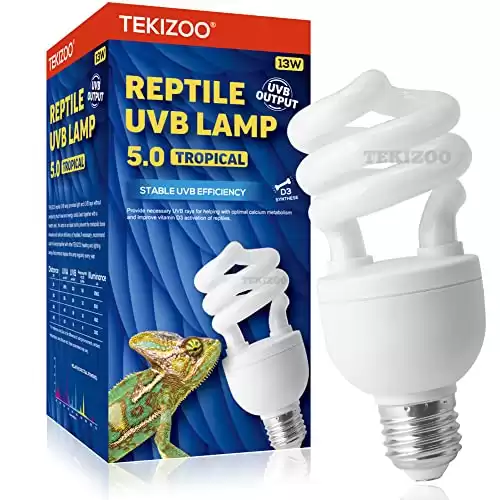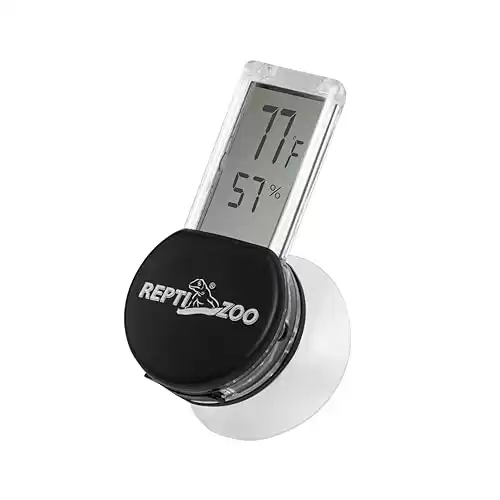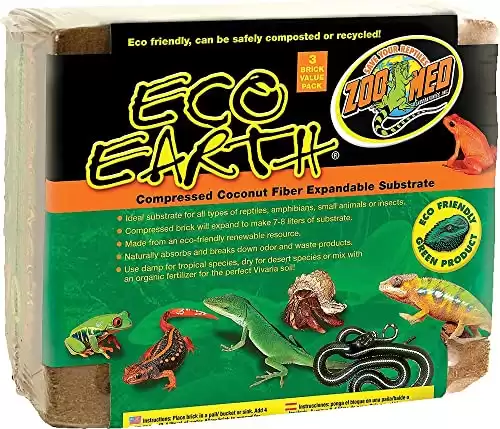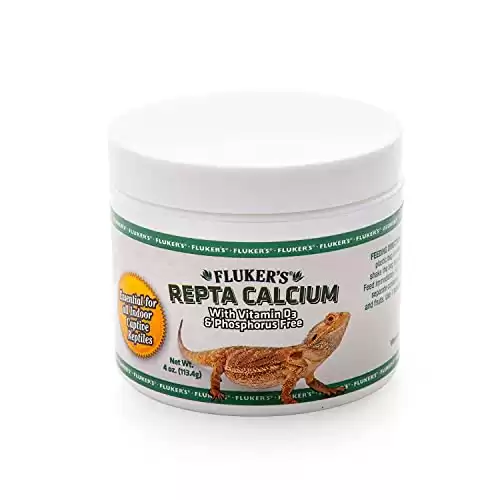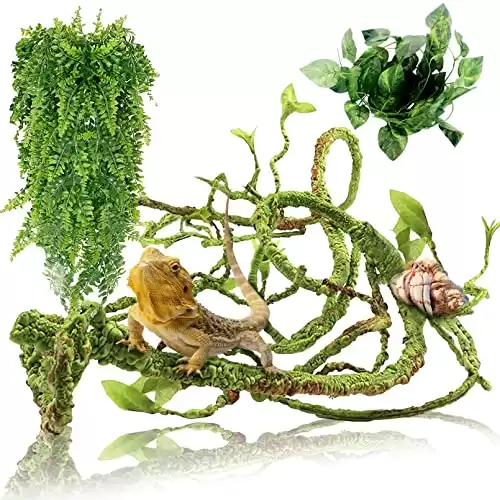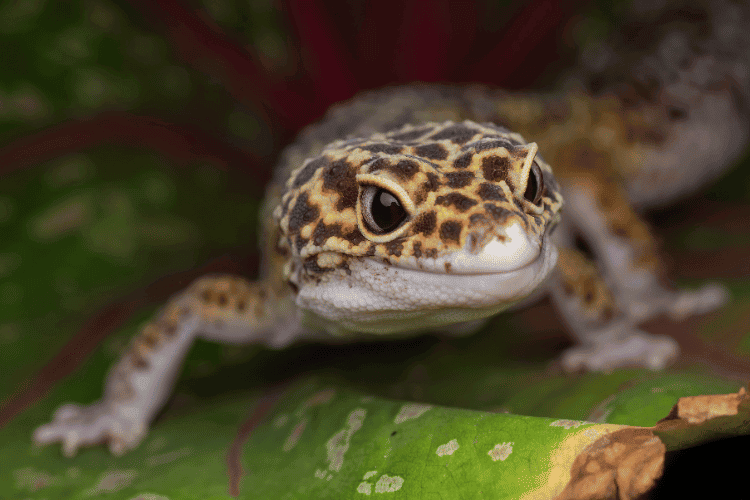
Leopard geckos are popular lizard pets that are relatively easy to care for. Their natural habitat is Pakistan, India, and Iran and are found in a variety of environments, including deserts, dry grasslands, and rocky areas.
Additionally, leopard geckos are known for their docile behavior and make great pets for people of all ages. In this detailed guide, we walk you through every aspect of owning a leopard gecko that you need to know.
That will include their diet, characteristics, living and breeding habits, common health issues, and ideal tank mates. Not just that, but we also provide additional reading resources and a convenient shopping list of equipment you’ll need.
Let’s get to it!
How Do Leopard Geckos Look?
A common leopard gecko is a small, cute lizard species, with a variety of patterns and colors.
Known for their granular, smooth skin, these geckos also have big eyes that help them see in low light. Another interesting feature is their forked tongue that they use to taste and smell their surroundings.
Not only that, but did you know that they’re the only gecko species that has translucent eyelids?
These beautiful lizards are fascinating creatures with unique personalities too. They’re intelligent and curious, and they can learn to recognize their owners.
Here are some of the physical characteristics of these geckos:
- Head: Your gecko’s head is small and triangular. The eyes are large and have round pupils.
- Body: The body of healthy gecko adults is long and slender.
- Tail: Gecko tails are thick since they use them for water and fat storage.
- Legs: A gecko’s legs are short and strong, with sharp claws that help them grip surfaces.
- Scales: The scales of a captive-bred gecko are small and granular. Color combinations typically include yellow with irregular black spots.
Where Do Leopard Geckos Live?
A common leopard gecko’s natural habitat is the desert regions of Pakistan, India, and Iran. It also hangs out in the rocky areas and dry grasslands of these countries.
These little guys are well-adapted to the harsh conditions of their desert home, which gets really hot and dry in the summer and cold and wet in the winter. They can handle temperatures ranging from 75 to 95℉ (24 to 35℃) as well.
In the wild, these independent geckos live in burrows that they dig themselves. They usually spend time basking in the sun to regulate their body temperature too.
Essential Equipment For Leopard Gecko Keeping
- 20-gallon tank
- Heat lamp
- UVB lights
- Basking spot
- Cool and moist hide
- Substrate or a choice of bedding (reptile carpet, paper towel…etc.)
- Food dish and a shallow water dish
- Calcium supplement
What Is the Ideal Captive Habitat for Leopard Geckos?
Leopard geckos are pretty low-maintenance which makes them popular lizard pets.
That said, they do need a proper, clean environment that mimics their native habitat so they can thrive. Their ideal home is a 20-gallon, gecko tank with a temperature gradient of 75-95℉ (24-35℃).
The warm side of the tank should have a basking spot that gets up to 90℉ (32℃). The cool side of the tank should be around 75℉ (24℃).
You can create a temperature gradient by using a heat lamp and a thermostat. The
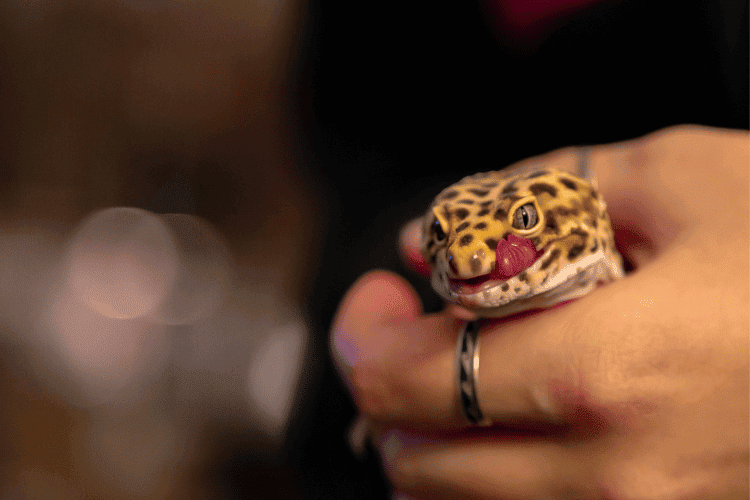
A common leopard gecko also needs hiding spots on each side of the tank. This will give your gecko a place to feel safe and secure. You can use a hide box, a piece of cork bark, or even a rolled-up towel.
Pro tips: Use a background that mimics their natural environment, such as a desert scene or a rocky outcrop. Add some plants and decorations to make the tank more interesting for your gecko and make sure you keep it in a dry environment too.
You’ll need to provide your beautiful lizards with a substrate next. Excellent choice of beddings include a reptile carpet or paper towels. Steer clear from sand or
Avoid using gravel or other small particles as well, since these can be ingested by your gecko and cause health problems. Replace the substrate or reptile carpet regularly to prevent it from becoming contaminated.
Finally, remember to keep the temperature and humidity levels right, and provide plenty of hiding spots. And most importantly, give your gecko some love and attention!
What Are the Ideal Tank Mates for Leopard Geckos?
Your geckos are pretty chill creatures and don’t like to share their space. They can be aggressive towards other lizards, and they may even eat them.
So, what are some good tank mates for these geckos? Well, invertebrates, like crickets, mealworms, or snails would be perfect. These guys won’t bother your gecko, and they can even act as food supply for your pet.
Just make sure to choose gecko tank mates that are compatible with the environmental conditions that you’re already providing the gecko.
Make sure too that the tank’s large enough for both animals to have their own space and hiding spots. Monitor the tank mates closely for any signs of aggression as well.
What Are the Feeding Habits of Leopard Geckos?
Common leopard geckos are greedy little guys and will eat as much as you give them. But it’s important to not overfeed them, as this can lead to a sick leopard gecko. It’s just as important to vary their diet, so they don’t get bored.
That said, these geckos are insectivores, which means they eat dead insects. They’re not picky eaters, but they prefer live insects like crickets, mealworms, and waxworms. They also enjoy eating fruits and vegetables—these should only make up a small portion of their diet, though.
Did you know that your geckos is crepuscular? Meaning, it’s most active at dawn and dusk. This is when it would naturally be hunting for food in the wild. So, if you’re trying to mimic its natural feeding habits, it’s best to feed it during these times of day.
Additionally, you should feed your gecko once or twice a day. The amount of food you give them will depend on their size and activity level. A good rule of thumb is to offer them as many dead insects as they can eat in 15 minutes.
Pro tip: gut-load the insects before you feed them to your lizard. This means feeding the insects a nutritious diet so that they pass on the nutrients to your gecko. You can gut-load your insects with fruits and vegetables, or with a commercial gut-loading supplement.
What Is the Temperament of Leopard Geckos?
Like all animals, leopard geckos have their own unique personalities.
Some geckos are more outgoing and friendly, while others are more shy and reserved. Do your research and find a gecko that has a temperament that matches your own.
Consider the following when judging the temperament of this gecko species:
- Age: Younger geckos are often more active and outgoing than older ones.
- Gender: Females generally show more docile behavior than males.
- Environment: The environment in which a gecko is raised can also affect its temperament. Geckos that are raised in a calm and stress-free environment are more likely to be calm.
What Are the Common Diseases for Leopard Geckos?
We don’t like it when we fall sick—so it’s natural that we hate it even more when our pets do.
If you want to be a vigilant gecko owner then, be on the lookout for the following common diseases a sick leopard gecko might have. Be sure to check them in with a vet immediately too.
- Metabolic bone disease: This is a condition caused by a lack of
calcium and vitamin D. It can lead to bone deformities, muscle weakness, and even death. - Respiratory infections: These are infections caused by bacteria or viruses. Symptoms include sneezing, coughing, and difficulty breathing.
- Impaction: This is a condition where food becomes stuck in the gecko’s digestive tract. It can be due to eating too much food, eating food that’s too large, or not drinking enough fresh water.
- Skin problems: These problems can be because of parasites, allergies, or poor diet. You’ll notice scratching, redness, and scales falling off.
- Eye problems: Infections, parasites, or injuries can lead to eye problems. They’ll cause redness, swelling, and discharge from the eyes.
What Are the Lifespan and Size of Leopard Geckos?
A common leopard gecko can live for 10 to 20 years, with some individuals living even longer. These geckos are typically about 10-16 inches long, with males being slightly larger than females.
But how do these geckos grow and change over time?
As baby geckos, they’re about 2-3 inches long when they hatch. They’re pretty small and fragile, so it’s important to handle them with care.
When they become juvenile, they’re about 4-6 inches long. Since they’re still growing and developing, it’s important to provide them with a nutritious diet and a healthy environment.
Finally, adult geckos are about 10-16 inches long. They’re fully grown and can live for many years.
What Are the Breeding Habits of Leopard Geckos?
Leopard geckos are relatively easy to breed in captivity. They’re also known for being prolific breeders, and can produce multiple clutches of eggs each year.
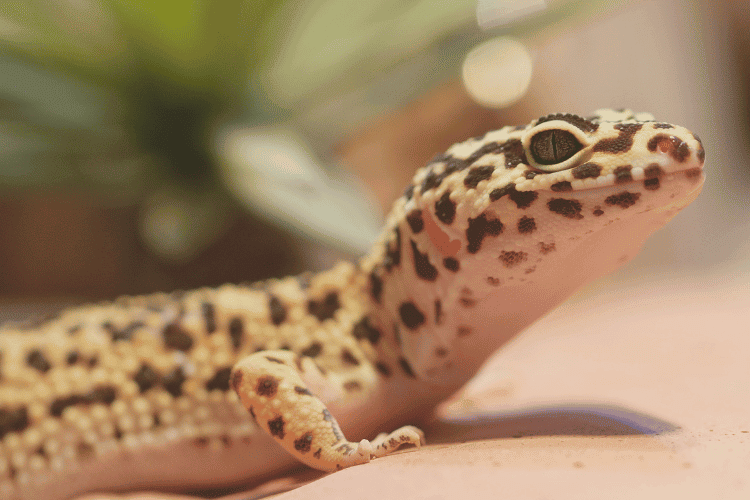
The breeding season for them typically begins in the spring and summer months. Further, these reptiles reach sexual maturity when they’re 18-24 months old.
The male adult gecko will typically court the female by bobbing his head and waving his tail. Once the female is receptive, the male will mount her and fertilize her eggs.
After that, the adult female will lay her eggs in a moist substrate, such as sand or vermiculite. She’ll lay a clutch of 1-12 eggs, which will hatch after about 60 days. The baby geckos will be independent from birth.
Check out our expert breeding tips below for extra help:
- Provide a suitable environment for the breeding process. This includes a temperature gradient of 75-95℉ (24-35℃), a humid hide, and a place for the female to lay her eggs.
- Pair a male and female gecko that are of breeding age.
- Provide adult females with a nutritious diet and plenty of
calcium . - Monitor the female for signs of breeding, such as increased appetite and weight gain.
- Remove the eggs from the female’s enclosure after she lays them.
Are There Legal Considerations for Owning a Leopard Gecko?
You’ll need to check with your local laws to see if it’s legal to own a leopard gecko in your area.
Some places have restrictions on owning certain types of animals, or may require you to have a permit or license.
Additional Resources
Books:
- “Leopard Geckos For Dummies” by Liz Palika
- “I Want A Leopard Gecko” by Tristan Pulsifer and Jacquelyn Elnor Jackson
- “Leopard Gecko Care: Comprehensive Guide and Manual on How to Take Care of Leopard Gecko as Pets” by Charlotte Calvin
Forums:
Case Study
Goliath the leopard gecko (@gogothegecko) is perhaps the cutest, wide-eyed gecko you’ll ever meet! Every follower of Goliath has fallen in love with geckos immediately because of how adorable and docile he is.
FAQs
Can I keep multiple leopard geckos together?
No, these geckos are solitary animals and shouldn’t be kept together. Housing them together can stress them out and lead to aggressive behaviors, injuries, or even death.
Are leopard geckos hard to keep alive?
Your gecko pets aren’t difficult to keep alive, but they do require some basic care. They need a properly heated environment, a humidity level of 40%, a nutritious diet, and regular access to fresh water.
Can I hold my pet leopard gecko?
Yes, but try not to do it too often. Here are some tips for holding your lizard pet:
- Approach your gecko slowly and calmly.
- Talk to your gecko in a soft voice.
- Let your gecko sniff your hand before you pick it up.
- Support your gecko’s body with both hands.
- Don’t hold your gecko for too long.
If your gecko starts to squirm or show signs of stress, put it back in its gecko tank. With a little patience and practice, you’ll be able to hold your beautiful lizard without stressing it out.


